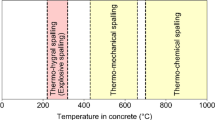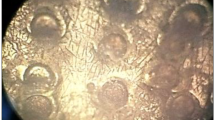Abstract
Cutter wear is an important factor affecting the efficiency of tunnel boring machines (TBMs). In this paper, using a case study from the tunnel project of the XEVIII section of the second phase of the northern Xinjiang water supply project, cutter wear under conditions of high-strength (average strength 120 MPa) surrounding rock is studied. The results show that the cumulative wear of the center cutters and the front cutters increases exponentially with an increase of installation radius, and the cumulative wear of the edge cutters is affected by the installation angle, which increases at first and then decreases with an increase of the installation radius. The single cutter wear of the edge cutters is the largest, of the front cutters is the second largest, and of the center cutters is the smallest. With an increase of surrounding rock strength, the wear of the center cutters and front cutters increases exponentially, and the wear of the edge cutters increases based on a quadratic function per meter, while the cumulative wear per meter increases linearly. Volumetric mass loss increases exponentially with the increase of surrounding rock strength and Cerchar abrasion index and decreases logarithmically with the increase of cutter life index. When the surrounding rock strength is constant, when the revolutions per minute, torque, thrust, and penetration per revolution increase, the cutter wear per meter changes following a quadratic function, which first increases and then decreases. With the increase of penetration rate, the cutter wear per meter changes as a quadratic function, first decreasing and then increasing. Cutter wear is most sensitive to cutter head torque and thrust. In order to reduce cutter wear, it is suggested that cutter head torque should be limited to the range 1100–1300 kN m or 2100–2400 kN m, and the thrust should be limited to the range 9500–11,000 kN or 15,500–16,000 kN.

































Similar content being viewed by others
References
Bieniawski ZT, Celada CB, Galera JM, Tardaguila IG (2009) Prediction of cutter wear using RME. ITA-AITES World Tunnel Congress, Budapest
Blindheim OT (1979) Boreability predictions for tunneling. Dissertation, Norwegian University of Science and Technology
Bruland A (1998) Hard rock tunnel boring. Dissertation, Norwegian University of Science and Technology
Cheema S (1999) Development of a rock mass boreability index for the performance of tunnel boring machines. Dissertation, Colorado School of Mines
Deng JL (1982) Control problems of grey systems. Syst Control Lett 1(5):288–294. https://doi.org/10.1016/S0167-6911(82)80025-X
Farrokh E, Kim DY (2018) A discussion on hard rock TBM cutter wear and cutterhead intervention interval length evaluation. Tunn Undergr Space Technol 81:336–357. https://doi.org/10.1016/j.tust.2018.07.017
Frenzel C (2011) Disc cutter wear phenomenology and their implications on disc cutter consumption for TBM. In: 45th American rock mechanics/geomechanics symposium. San Francisco, USA
Gehring K (1995) Prognosis of advance rates and wear for underground mechanized excavations. Felsbau 13(6):439–448 (in German)
Grødal CK (2012) Wear and corrosion properties of steels used in Tunnel Boring Machines Dissertation, Norwegian University of Science and Technology
Hassanpour J (2018) Development of an empirical model to estimate disc cutter wear for sedimentary and low to medium grade metamorphic rocks. Tunn Undergr Space Technol 75:90–99. https://doi.org/10.1016/j.tust.2018.02.009
Hassanpour J, Rostami J, Azali ST, Zhao J (2014) Introduction of an empirical TBM cutter wear prediction model for pyroclastic and mafic igneous rocks; a case history of Karaj water conveyance tunnel. Iran Tunn Undergr Space Technol 43:222–231. https://doi.org/10.1016/j.tust.2014.05.007
Hassanpour J, Rostami J, Zhao J, Azali ST (2015) TBM performance and disc cutter wear prediction based on ten years experience of TBM tunneling in Iran. Geomech. Tunn. 8(3):239–247. https://doi.org/10.1002/geot.201500005
Huang MH, Chen LY (2020) Analysis of sensitive factors of deep foundation pit support based on grey relational degree. J Shantou Univ (nat Sci) 35(01):16–32 (in Chinese)
Karami M, Zare S, Rostami J (2020) Tracking of disc cutter wear in TBM tunneling: a case study of Kerman water conveyance tunnel. Bull Eng Geol Environ 80:201–219. https://doi.org/10.1007/s10064-020-01931-7
Käsling H, Thuro K (2010) Determining abrasivity of rock and soil in the laboratory. Geol Act 1(1):1973–1980
Liu QS, Liu JP, Pan YC, Zhang XP, Peng XX, Gong QM, Du LJ (2017) A wear rule and cutter life prediction model of a 20-in. TBM cutter for granite: a case study of a water conveyance tunnel in China. Rock Mech Rock Eng 50:1303–1320. https://doi.org/10.1007/s00603-017-1176-4
Macias FJ (2016) Hard rock tunnel boring: performance predictions and cutter life assessments. Dissertation, Norwegian University of Science and Technology
Qi G (2014) Cutters’ layout optimization method of the full-face rock tunnel boring machine based on grey relational analysis. J Mech Eng 50(21):45. https://doi.org/10.3901/JME.2014.21.045
Rostami J (1997) Development of a force estimation model for rock fragmentation with disc cutters through theoretical modeling and physical measurement of crushed zone pressure. Dissertation, Colorado School of Mines
Tarkoy PJ (2010) Simple and practical TBM performance prediction. Geomech Tunn 2(2):128–139. https://doi.org/10.1002/geot.200900017
Wang LH, Qu CY, Kang YL, Su CX (2011) A mechanical model to estimate the disc cutter wear of tunnel boring machines. Adv Sci Lett 4:2433–2439. https://doi.org/10.1166/asl.2011.1604
Wang LH, Kang YL, Zhao XJ, Zhang Q (2015) Disc cutter wear prediction for a hard rock TBM cutterhead based on energy analysis. Tunn Undergr Space Technol 50:324–333. https://doi.org/10.1016/j.tust.2015.08.003
Wijk G (1992) A model of tunnel boring machine performance. Geotech Geol Eng 10:19–40. https://doi.org/10.1007/BF00881969
Yagiz S (2002) Development of rock fracture and brittleness indices to quantify the effects of rock mass features and toughness in the CSM model basic penetration for hard rock tunneling machines. Dissertation, Colorado School of Mines
Zhang ZH, Meng L, Sun F (2014) Wear analysis of disc cutters of full face rock tunnel boring machine. Chin J Mech Eng 27(6):1294–1300. https://doi.org/10.3901/CJME.2014.0905.145
Zhang JM, Tang ZC, Liu QS (2015) Relation between point load index and uniaxial compressive strength for igneous rock. Rock Soil Mech S2:595–602 (in Chinese)
Acknowledgements
The authors are grateful for the financial support from the National Natural Science Foundation of China (No. 51378053).
Author information
Authors and Affiliations
Corresponding author
Additional information
Publisher's Note
Springer Nature remains neutral with regard to jurisdictional claims in published maps and institutional affiliations.
Rights and permissions
About this article
Cite this article
Zhou, Z., Tan, Z., Li, Z. et al. TBM Cutter Wear Under High-Strength Surrounding Rock Conditions: A Case Study from the Second Phase of the Northern Xinjiang Water Supply Project. Rock Mech Rock Eng 54, 5023–5039 (2021). https://doi.org/10.1007/s00603-021-02545-5
Received:
Accepted:
Published:
Issue Date:
DOI: https://doi.org/10.1007/s00603-021-02545-5




